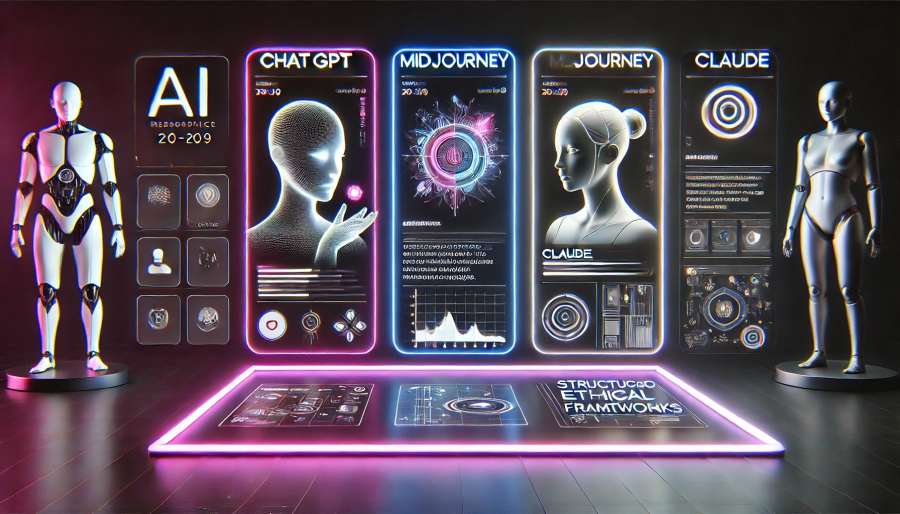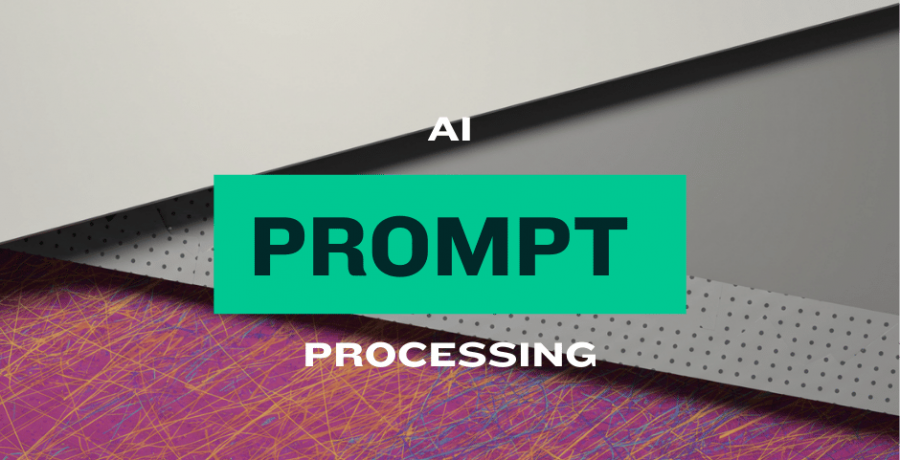Decoding AI Prompt Processing: ChatGPT, MidJourney, and Claude
06, Feb 2025
Prompt Refinement
In the rapidly evolving landscape of artificial intelligence, understanding how different AI models process prompts is crucial for optimizing their use. This article delves into the unique approaches of three prominent AI models: ChatGPT, MidJourney, and Claude, exploring their strengths, limitations, and best practices for prompt engineering.
ChatGPT's Prompt Processing
A. Language Model Fundamentals
ChatGPT, developed by OpenAI, is built on a large language model (LLM) architecture. This foundation allows it to understand and generate human-like text based on patterns learned from vast amounts of training data. The model's neural network architecture enables it to capture complex linguistic relationships and context.B. Token-based Processing
ChatGPT processes input prompts by breaking them down into tokens - small units of text that can be as short as a single character or as long as a word. This tokenization allows the model to handle a wide range of inputs efficiently. Each token is processed sequentially, with the model predicting the most likely next token based on the context provided.C. Context Window and Limitations
One of the key limitations of ChatGPT is its context window. As of early 2025, ChatGPT can handle up to 4,096 tokens (roughly 3,000 words) in a single conversation. This limit affects the model's ability to maintain long-term context and can lead to inconsistencies in extended conversations or when processing very long documents.D. Strengths in Text Generation and Conversation
ChatGPT excels in generating coherent and contextually relevant text. Its strength lies in understanding nuanced prompts and producing human-like responses across a wide range of topics. This makes it particularly effective for tasks such as content creation, answering questions, and engaging in dynamic conversations.MidJourney's Approach to Prompts
A. Image Generation Focus
Unlike ChatGPT, MidJourney specializes in image generation. Its prompt processing is geared towards interpreting textual descriptions and translating them into visual outputs.B. Natural Language to Visual Interpretation
MidJourney's AI excels at bridging the gap between linguistic descriptions and visual representations. It processes natural language prompts by identifying key visual elements, styles, and compositions described in the text.C. Style and Aesthetic Understanding
One of MidJourney's strengths is its ability to interpret and apply various artistic styles and aesthetics. The model can process prompts that reference specific art movements, techniques, or visual characteristics, incorporating these elements into the generated images.D. Iterative Refinement Process
MidJourney's prompt processing often involves an iterative approach. Users can refine their prompts based on initial outputs, allowing for a collaborative process between human creativity and AI generation.Claude's Prompt Handling
A. Anthropic's Constitutional AI Principles
Claude, developed by Anthropic, incorporates "constitutional AI" principles. This approach aims to create AI systems that are more aligned with human values and ethical considerations.B. Enhanced Context Understanding
Claude demonstrates an advanced ability to maintain context over longer conversations. Its prompt processing involves a more nuanced understanding of complex instructions and multi-step queries.C. Improved Task Following and Instruction Adherence
One of Claude's strengths is its ability to closely follow detailed instructions. Its prompt processing is particularly adept at breaking down complex tasks and addressing each component systematically.D. Ethical Considerations in Prompt Processing
Claude's design incorporates ethical safeguards in its prompt processing. It's programmed to avoid generating harmful or biased content, making it particularly suitable for applications where content safety is a priority.Comparative Analysis
A. Input Format Preferences
- ChatGPT: Excels with natural language inputs, from simple queries to complex instructions.
- MidJourney: Prefers descriptive text prompts focused on visual elements and styles.
- Claude: Handles structured and unstructured prompts effectively, with a preference for clear, detailed instructions.
B. Output Capabilities and Limitations
- ChatGPT: Generates text-based outputs, limited by context window.
- MidJourney: Produces visual outputs, limited by its understanding of complex abstract concepts.
- Claude: Offers text-based outputs with enhanced context retention and task adherence.
C. Prompt Sensitivity and Specificity Requirements
- ChatGPT: Moderately sensitive to prompt wording, benefits from clear instructions.
- MidJourney: Highly sensitive to specific visual descriptors and style cues.
- Claude: Less sensitive to exact wording, but benefits from structured, detailed prompts.
D. Use Case Suitability
- ChatGPT: Ideal for general text generation, Q&A, and conversational tasks.
- MidJourney: Best for visual content creation and artistic exploration.
- Claude: Well-suited for complex problem-solving, ethical content generation, and tasks requiring strict adherence to guidelines.
Best Practices for Each Model
A. Tailoring Prompts for ChatGPT
- Be specific and provide context.
- Use clear, concise language.
- Break complex tasks into smaller, manageable prompts.
- Experiment with different phrasings to optimize results.
B. Crafting Effective MidJourney Instructions
- Use vivid, descriptive language focusing on visual elements.
- Specify art styles, mediums, or artists for reference.
- Include composition details (e.g., foreground, background).
- Iterate on prompts based on initial outputs.
C. Optimizing Prompts for Claude
- Provide detailed, step-by-step instructions for complex tasks.
- Leverage its ability to handle longer, more nuanced prompts.
- Include ethical considerations or constraints when relevant.
- Use structured formats for multi-part queries or analyses.






Comments (0)